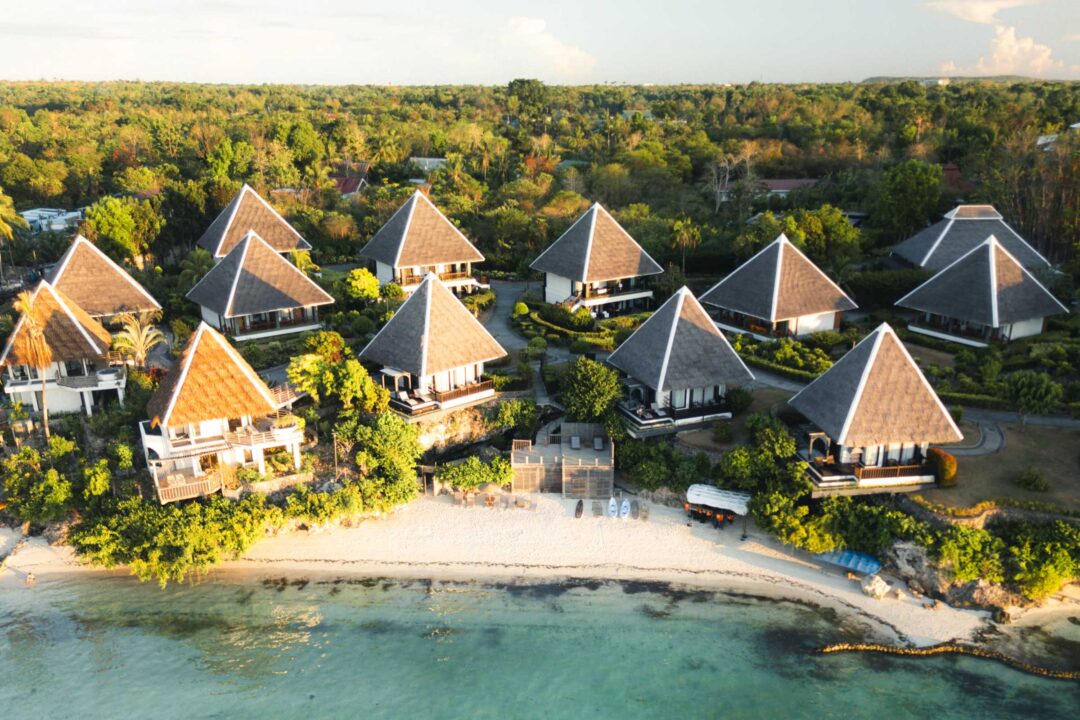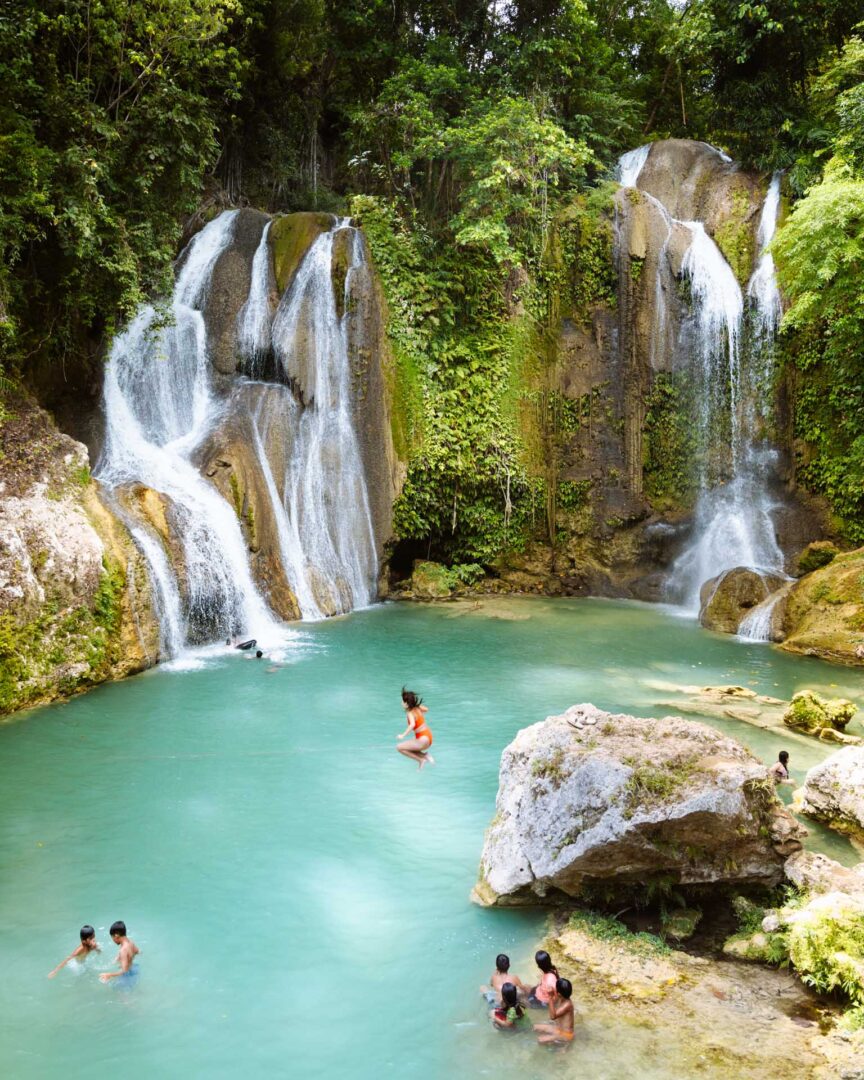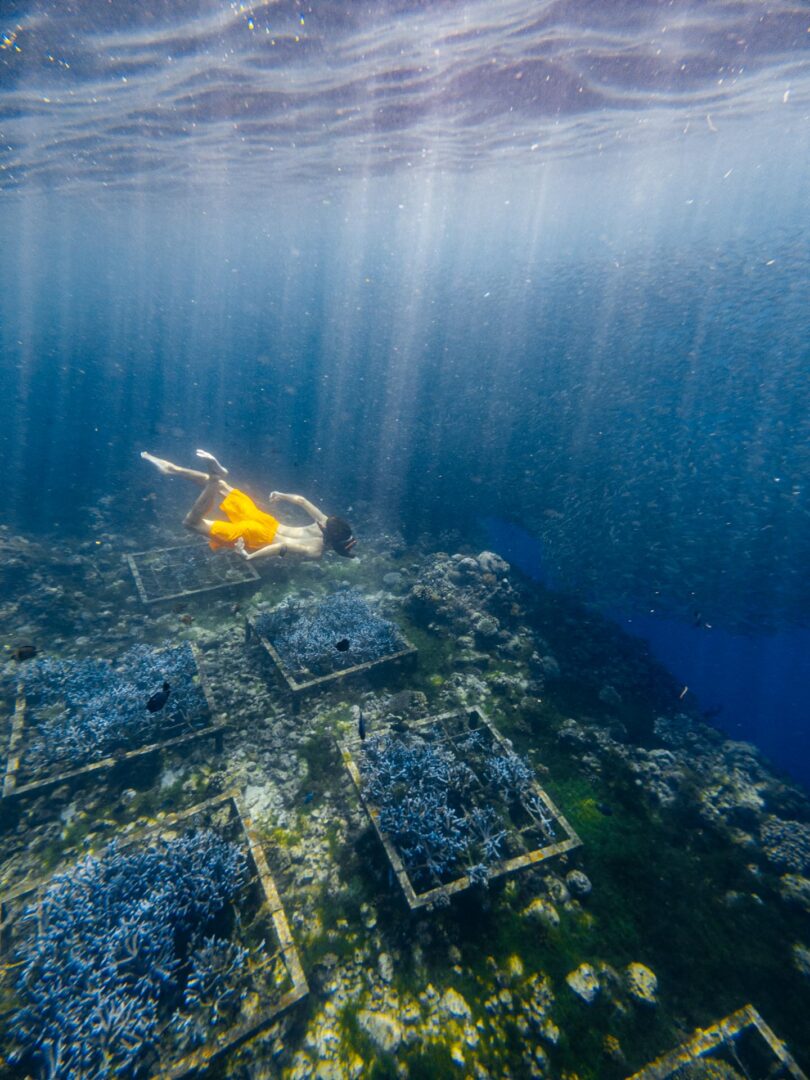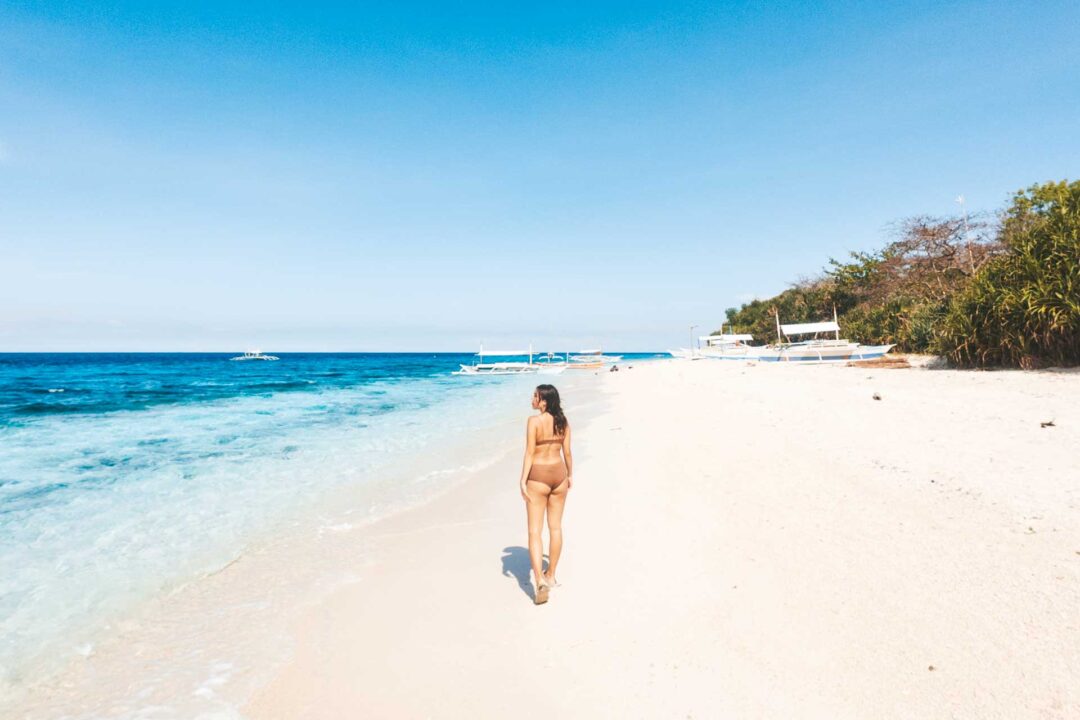Bohol is an adventurer’s playground with some of the best waterfalls, caves, snorkeling, and diving in the Philippines. You can spend weeks in Bohol relaxing on its white-sand beaches, chasing its aquamarine waterfalls, or taking a refreshing dip in its cold springs.
But the adventure begins even before you set foot on Bohol. This guide will provide you with all the information you need to make the most of your ferry trip from Oslob to Bohol, ensuring a smooth and enjoyable start to your Bohol adventure.
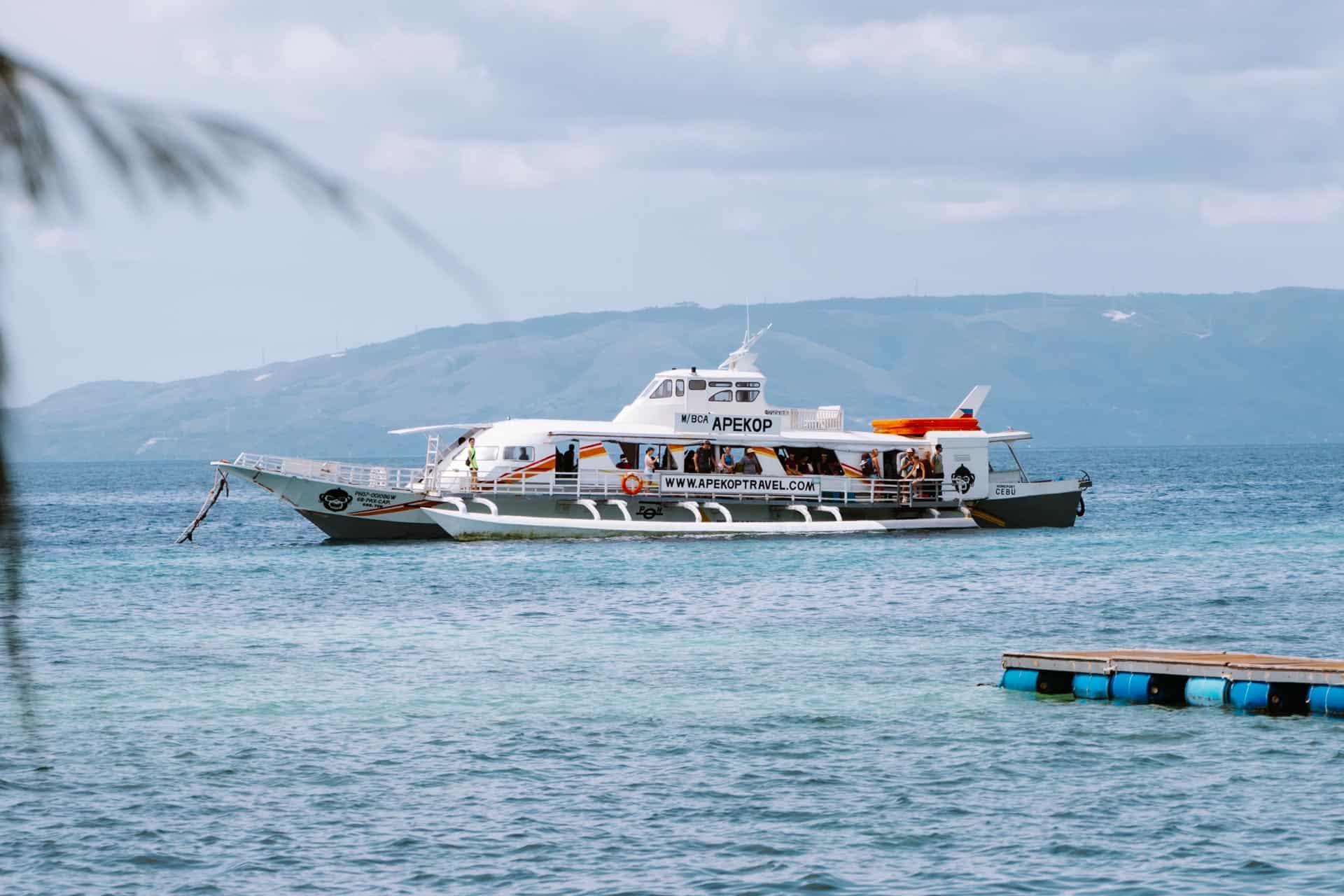
How to Get from Oslob to Bohol
In this article, I’ll detail how to take the ferry from Oslob in Cebu to Panglao in Bohol. I’ll start off with the best way to book your ticket, key things that you should know ahead of time, and transportation before and after your ferry ride.
There is currently only one ferry that goes from Oslob to Bohol, which can be booked through 12Go. We took this exact ferry trip in May 2024 while exploring the Philippines, so I hope our experience helps you out on your adventure.
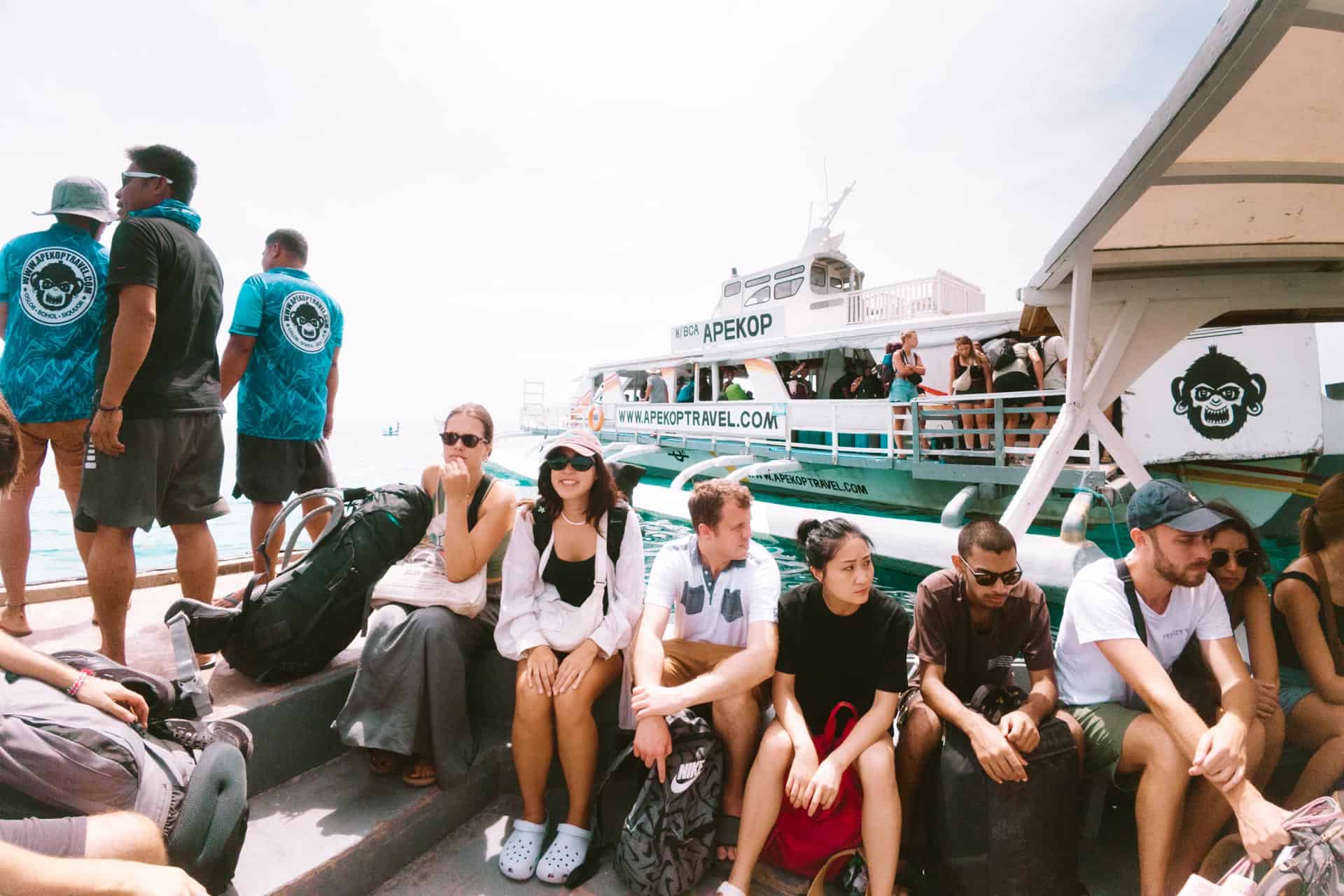
Key Points
Here are a few things that are good to know before booking your ferry from Oslob to Bohol:
Schedule for the ferry from Oslob to Bohol
There is only one ferry per day from Oslob to Bohol. The ferry leaves Quartel Beach in Oslob at 11:30 AM and arrives at Momo Beach in Bohol at 1:30 PM.
Luggage allowance on the ferry
Hand-carry luggage is free, but the ferry imposes a fee of 100 pesos per excess piece of luggage.
Arrival time before boarding the ferry
The ferry operator requests that you check in 1 hour before the ferry departure time. This gives them ample time to check everyone in and shuttle passengers and luggage to the ferry.
No restroom on the ferry
There is no restroom on the ferry, so be sure to use it before you board the boat.
Should You Book Online or at the Ferry Terminal?
You can always go to the ferry terminal in Oslob on the day of your trip and hope there is room on the ferry. But in our experience, it’s better to book in advance online.
When we rode the ferry from Oslob to Bohol, it was completely full with passengers so we were glad that we booked in advance with 12Go.
How to Get to the Ferry Terminal in Oslob
The Bohol ferry leaves from Quartel Beach in Oslob. The ferry port is kind of hard to find, so we’ve included the exact location of the ferry port in Oslob in the map below.
If you’re going to the ferry port via tricycle or tuk-tuk from Oslob, tell the driver that you’re taking the ferry to Bohol and they will know exactly where to bring you.
As of May 2024, the local rate for tricycle rides around Oslob is 15 pesos per person. If you bring luggage into a tricycle it’s fair to pay extra if your luggage takes up an extra seat.
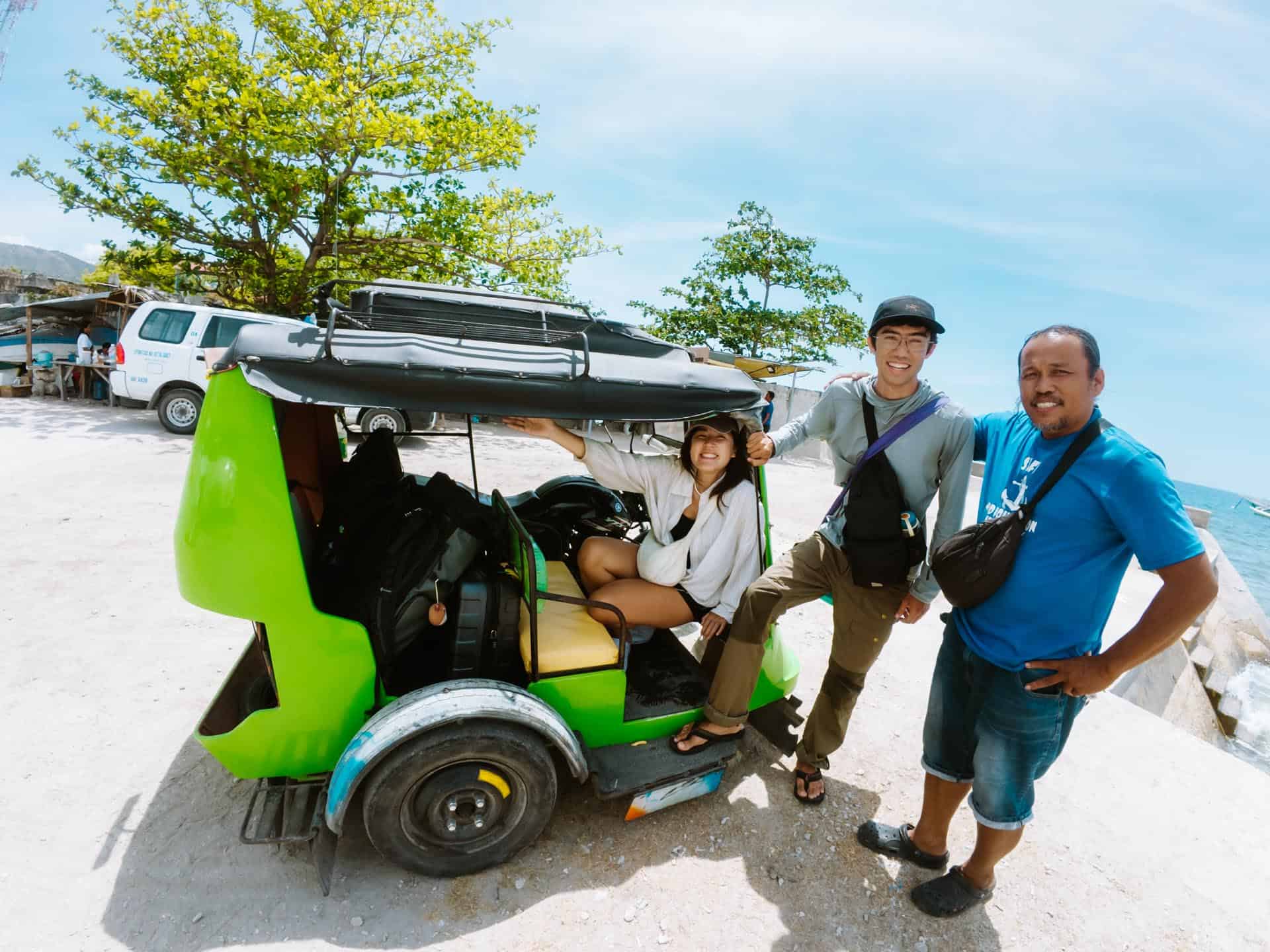
How to Get from Moalboal to the Oslob Ferry Port
Moalboal in Cebu and Panglao in Bohol are two of the most popular places for travelers in the Philippines. But getting between them can be tricky since there isn’t a direct ferry that goes from Moalboal to Panglao.
To get from Moalboal to Panglao, you’ll need to take the bus to Oslob first, then ride the ferry to Panglao.
The bus from Moalboal to Oslob takes a total of about 2 1/2 to 3 hours and requires a transfer at the Bato bus terminal.
Buses stop about every 30 minutes in front of Jollibee in Moalboal, so you’ll need to take a tricycle from your accommodation in Moalboal to the Jollibee, then hop on a bus that’s headed for Bato.
The bus from Moalboal to Bato takes about 2 hours. Once the bus gets to Bato, the bus pulls into a parking lot and everyone gets off. You’ll need to get your luggage and then get on another bus going to Oslob. If you need help, ask one of the people at the bus lot which bus you need to get on, and they will direct you to the correct bus.
The bus ride from Bato to Oslob is much shorter and takes about half an hour. When you get to Oslob, the bus stop is on the main road across from a 7-Eleven. You need to either walk or take a tricycle to the ferry port.
The walk from the Oslob bus stop to the ferry port is doable, but it might be tiresome with a large backpack or luggage, so I recommend taking a tricycle especially if you’re in a hurry. There is a tricycle pickup area near the 7-Eleven, so look for the area where the tricycles are lined up if you need a ride.
Our Experience on the Oslob to Bohol Ferry
We caught a tricycle from our accommodation in Oslob to get to the ferry port at Quartel Beach and arrived at the ferry port 1 hour before the ferry departure time. The check-in process for the ferry was smooth, and we paid an extra 100 pesos to check in our large suitcase.
After check-in, we boarded a small boat that took us to the ferry. The ferry was anchored just off shore. After we boarded the ferry, the small boat went back 3 more times to pick up passengers and luggage.
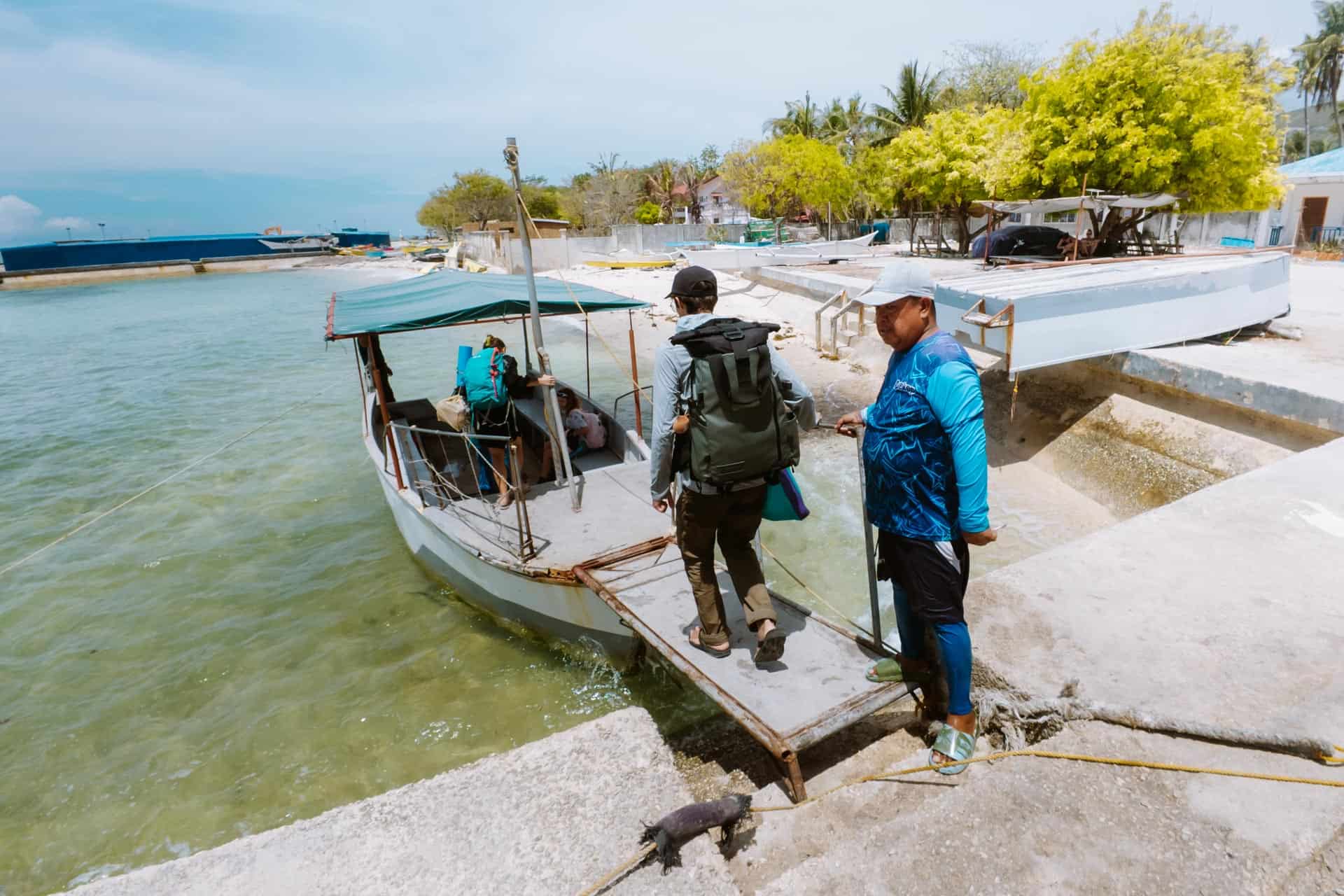
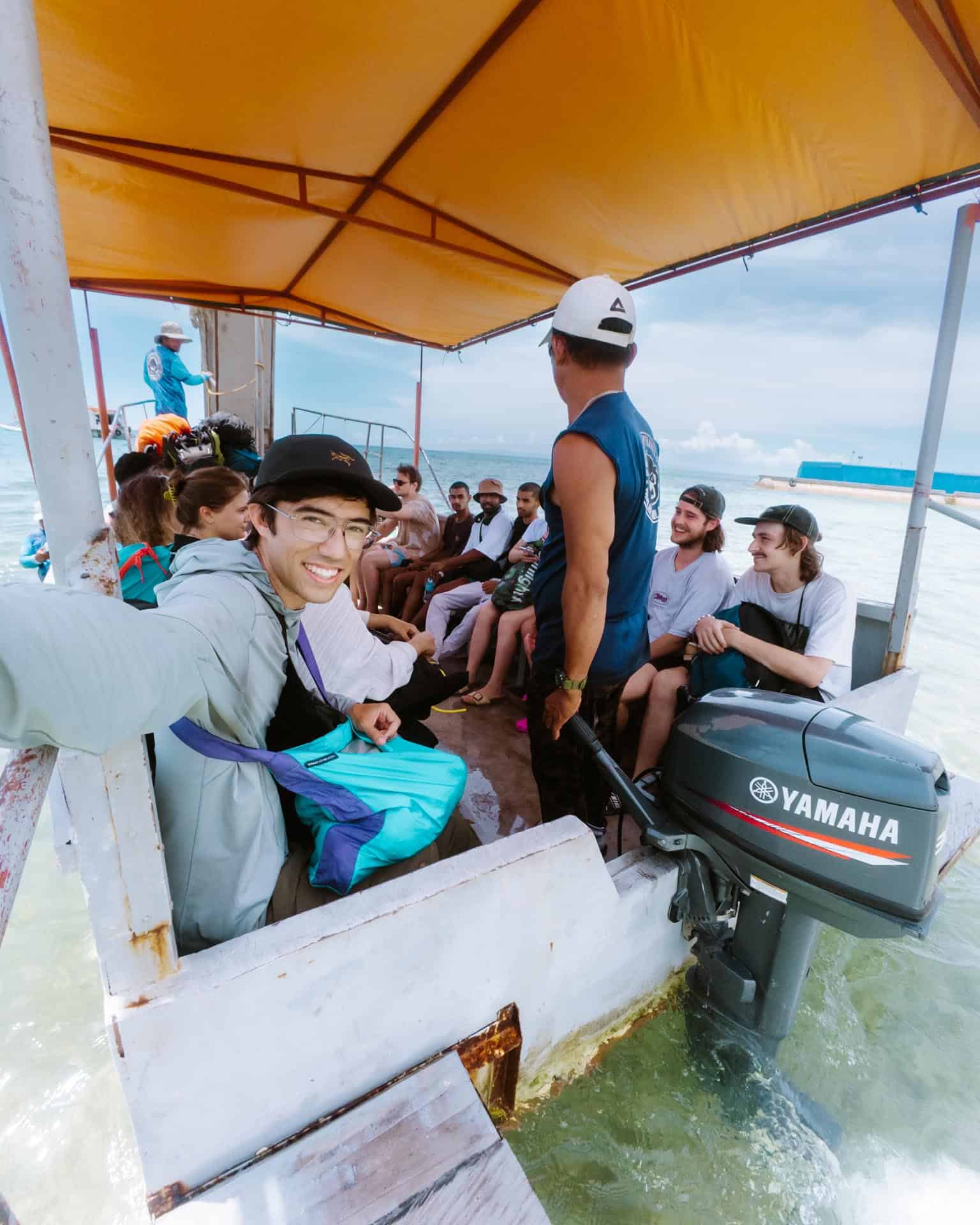
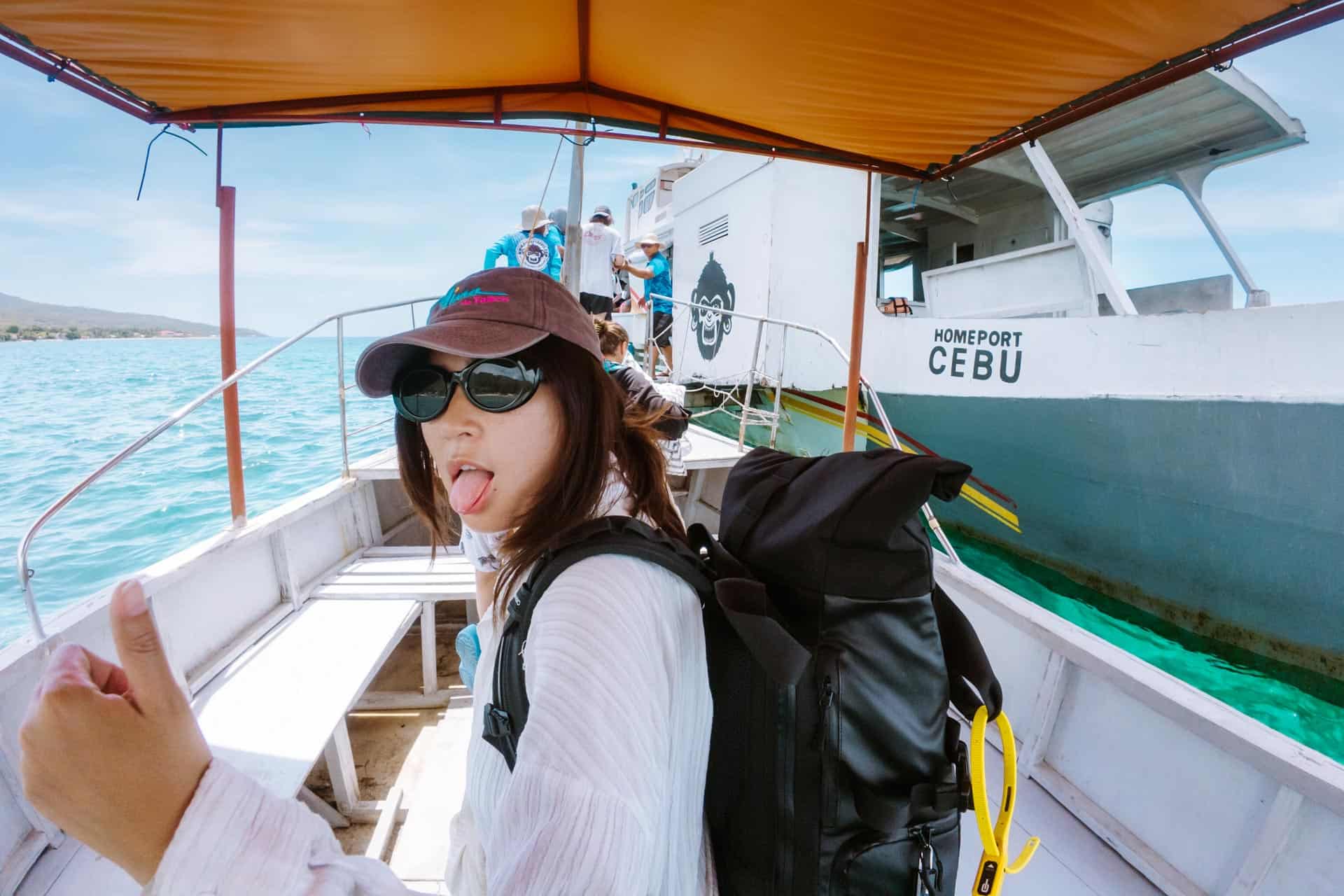
The ferry has designated areas for luggage, so you don’t need to keep your luggage at your feet.
The seating area in the ferry wasn’t cramped but it wasn’t spacious either. The seats are not explicitly defined, so I recommend carving out an area for yourself as early as possible so you don’t get crowded by other passengers.
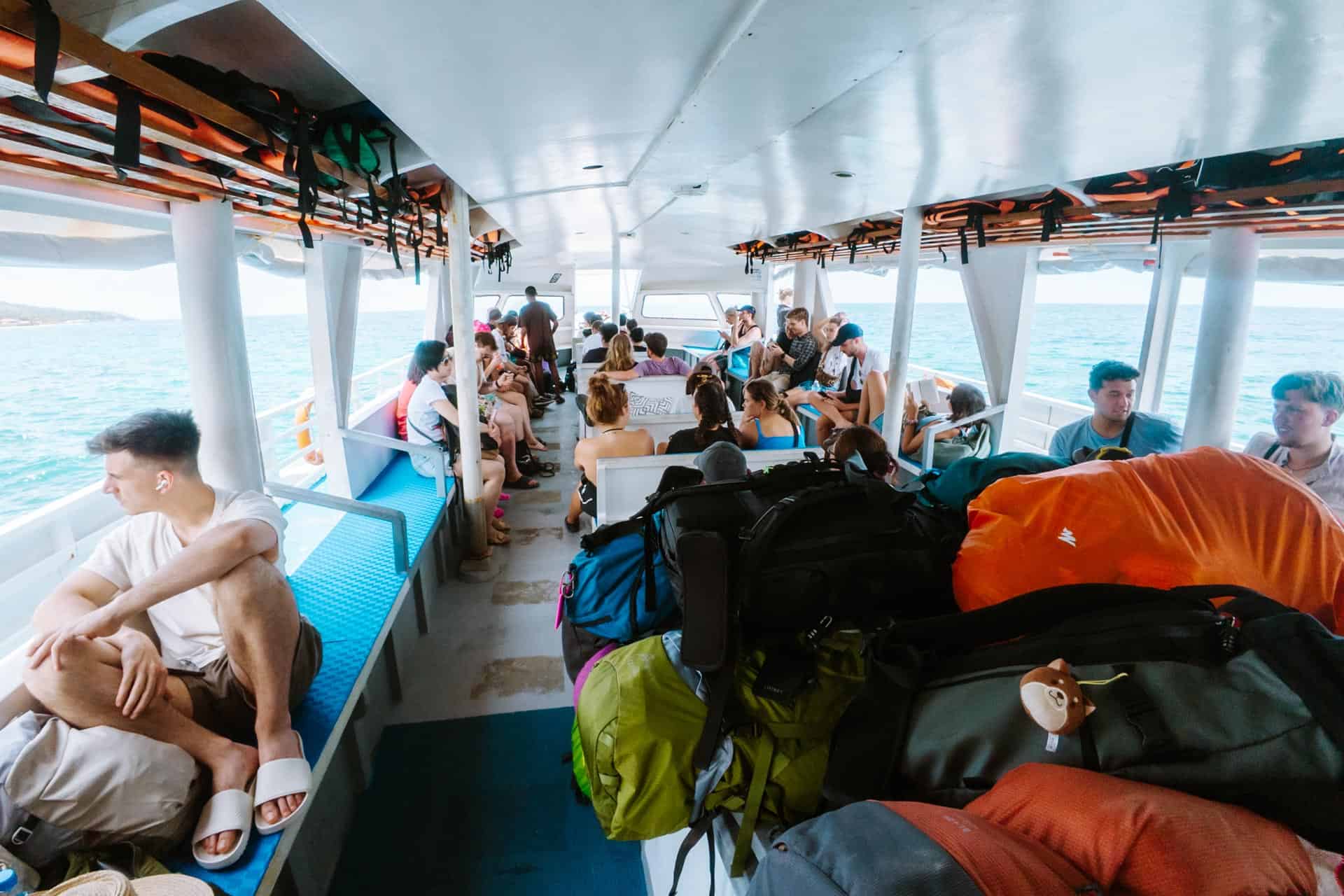
As the ferry got ready to depart, some of the ferry staff walked around selling drinks and snacks. Some of the other passengers bought beers but I’d rather not mix alcohol with a boat ride so I just got some chips.

Shortly before departure, the Coast Guard made an appearance on the ferry to ensure everyone had life jackets. The ferry crew handed out life jackets to everyone and there were plenty to go around. The ferry departed on time at 11:30 AM.
We had cell service until we got nearly to the halfway point between Cebu and Bohol. The ocean was extremely calm and the weather was stable during our trip, we couldn’t ask for better conditions to ride a ferry.
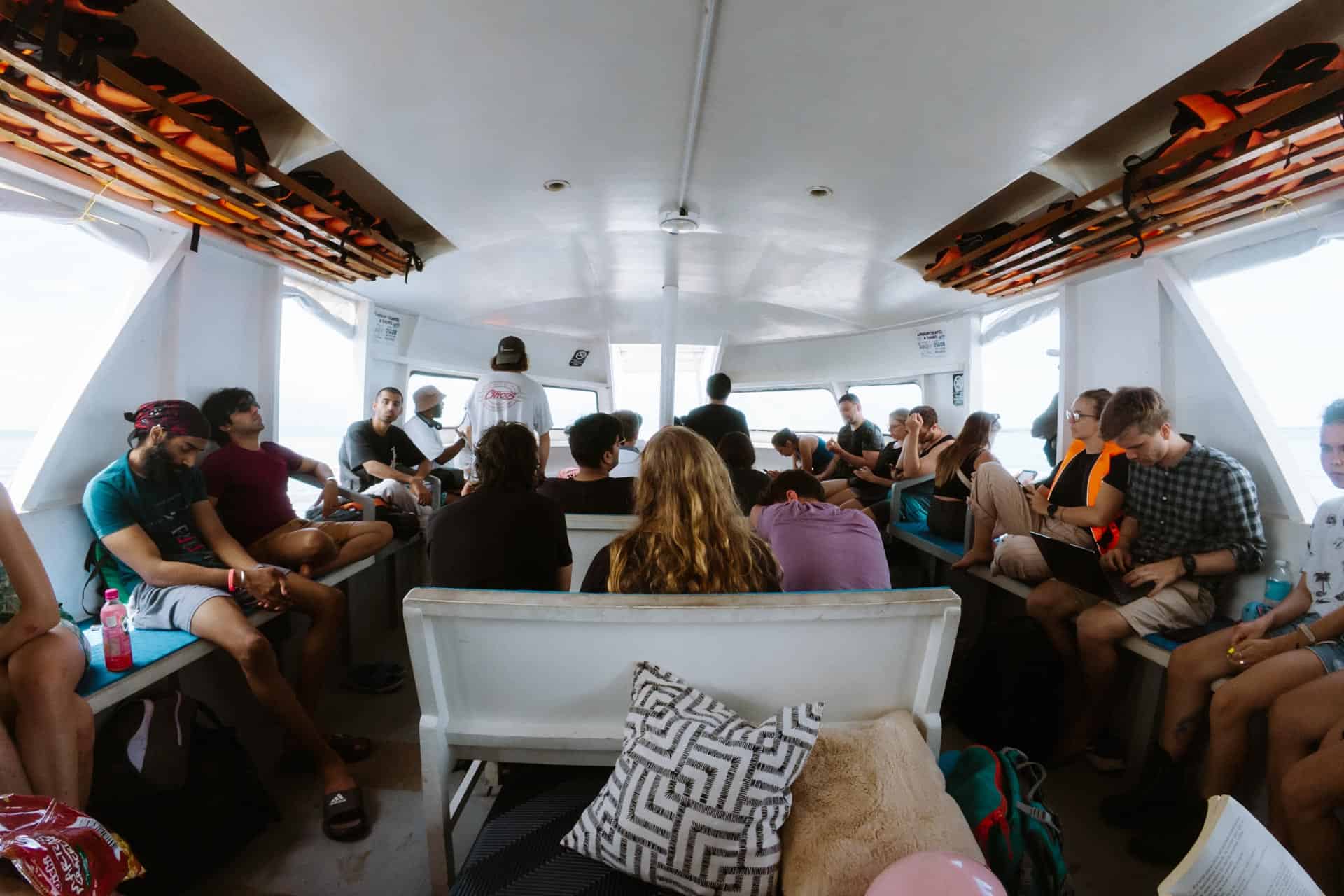
When the ferry arrived in Panglao, we boarded another small boat to take us from the ferry to the shore at Momo Beach. All of the passengers were brought to shore first, followed by the luggage.
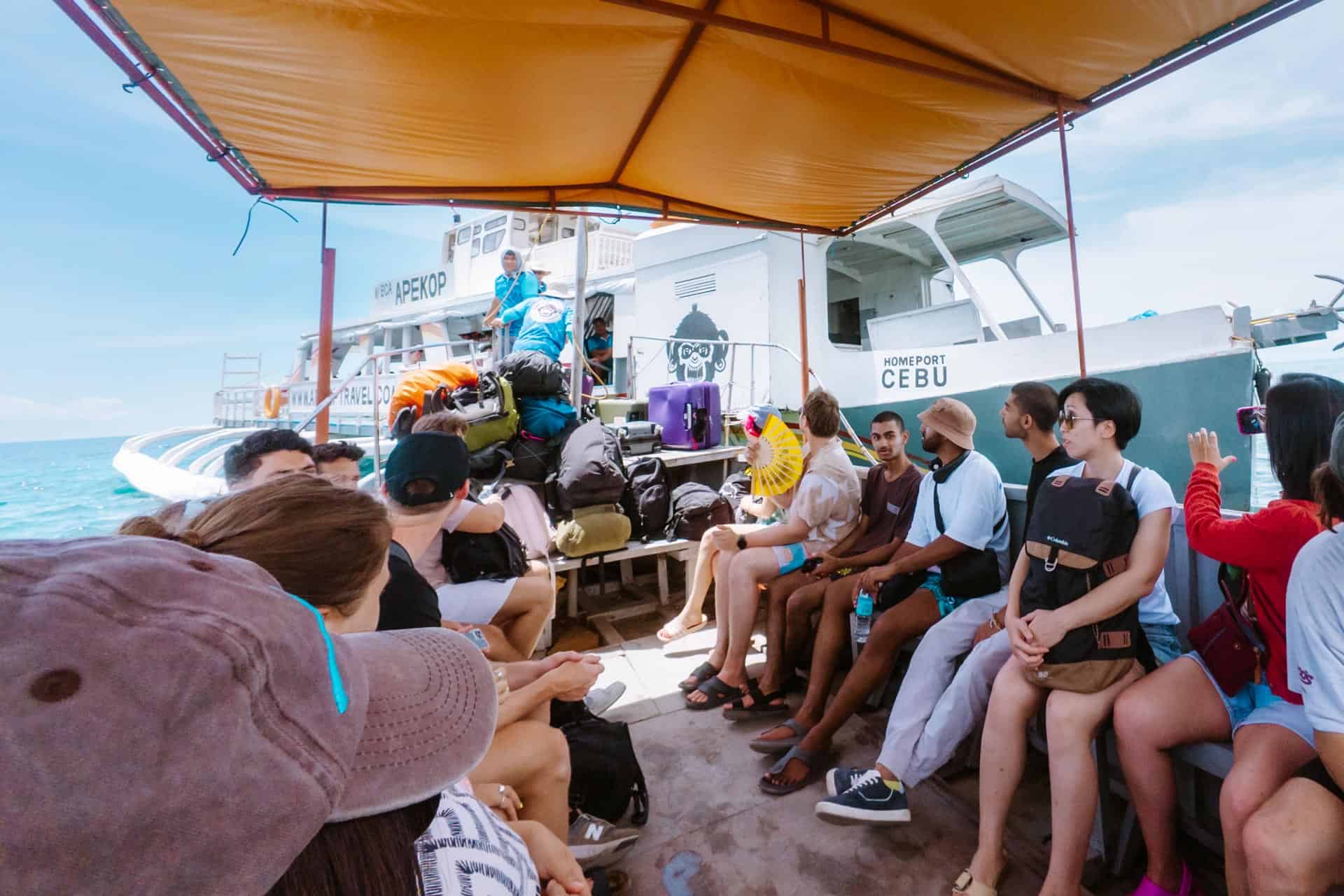
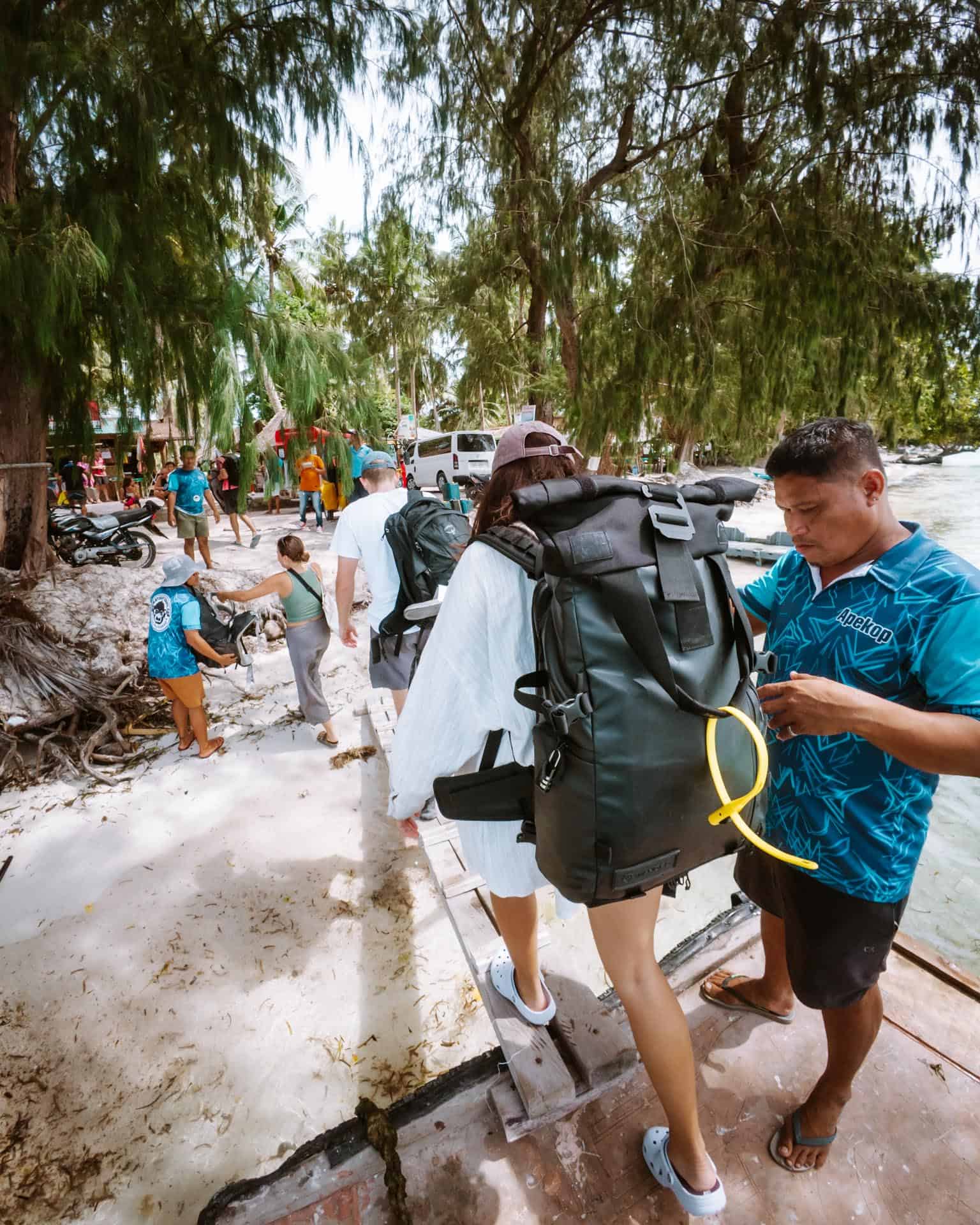
When we landed at Momo Beach, all of the passengers were instructed to put their luggage down in a line. At first, I was confused as to why we needed to put our luggage on the ground. Then a drug dog came around to smell all of the luggage.
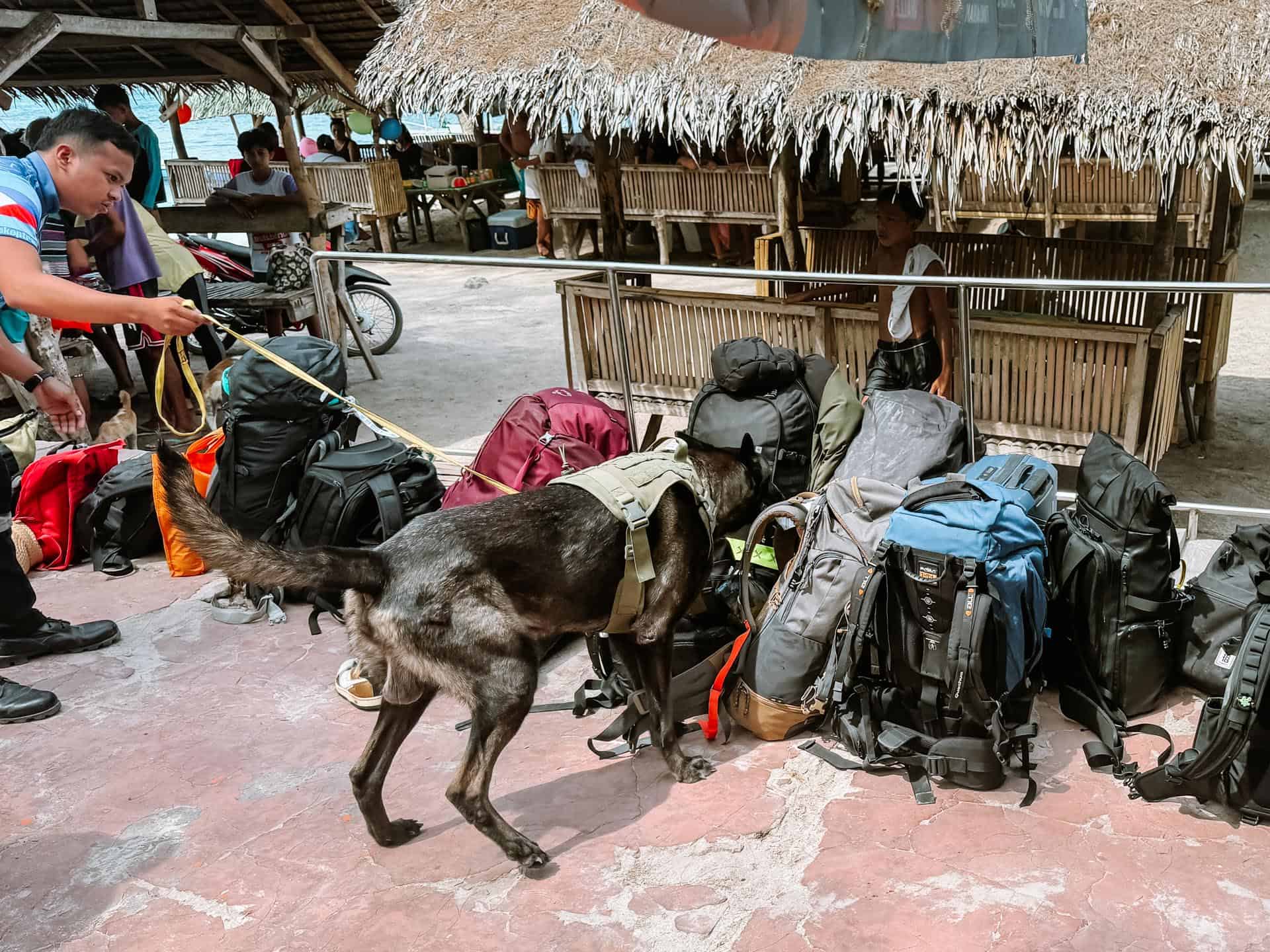
After the drug dog sniffed all our luggage, we were free to take our stuff and leave the ferry port at Momo Beach in Panglao.
How to Get from the Ferry Port in Panglao to Alona Beach
The ferry from Oslob to Bohol drops you off at Momo Beach, which is quite far from Alona Beach where most hotels in Panglao are located.
Fortunately, there are a bunch of jeepneys waiting at Momo Beach when the ferry arrives. The jeepneys will bring you anywhere in Panglao and have a set price of 500 pesos per ride. It’s a little steep for a jeepney ride, but you don’t have any other option unless you arrange for your own transportation in advance. You can always try to haggle with the jeepney drivers, but you don’t have much power in this situation since all the drivers are working together.
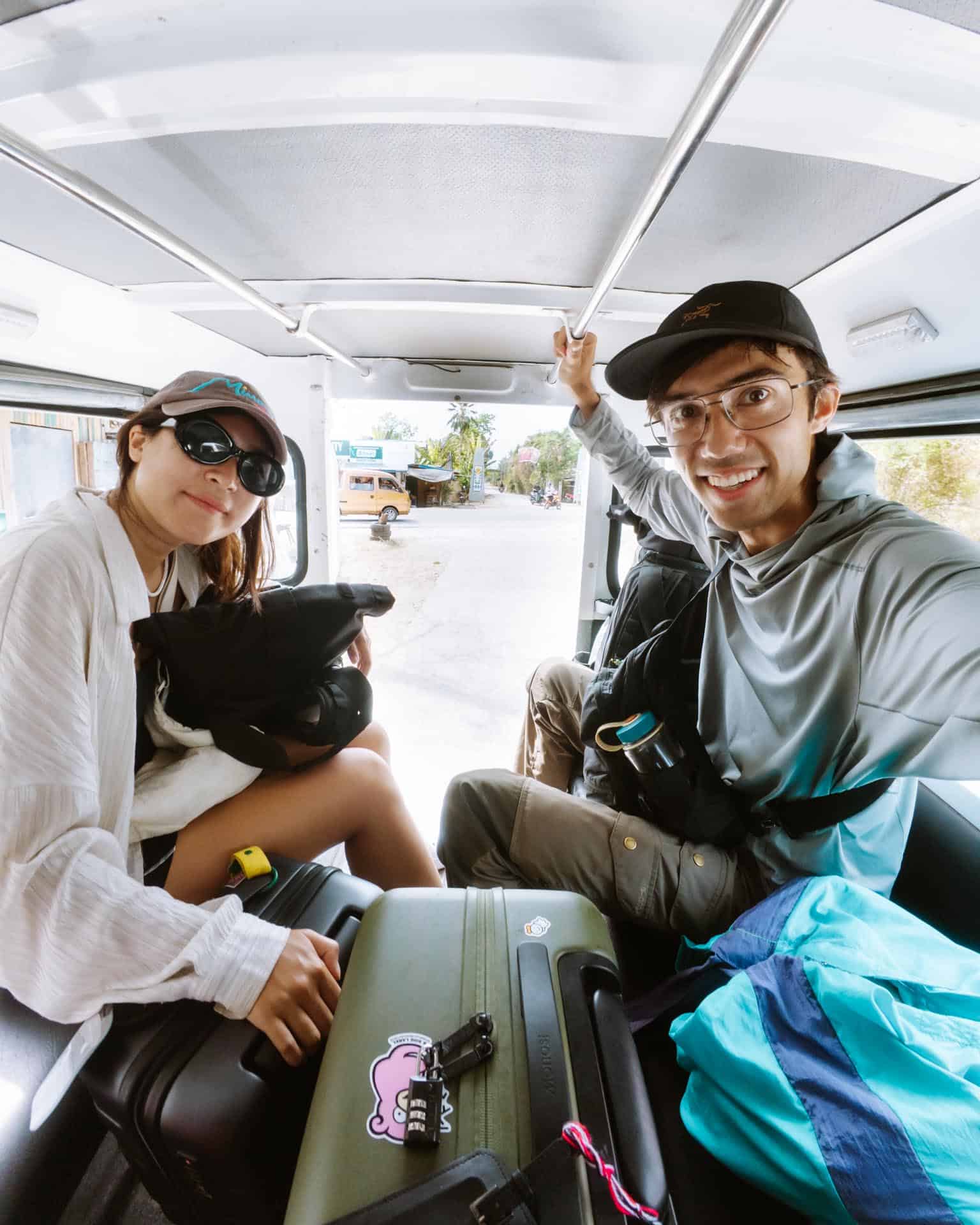
If you use one of the jeepneys, I recommend having exact change to pay them since they often conveniently don’t have change when you pay with large bills.
How Much Luggage Can You Take On the Oslob to Bohol Ferry?
There isn’t a hard-set rule on the luggage limit for the Oslob to Bohol ferry. Hand-carry luggage is free, but the ferry imposes a fee of 100 pesos per excess piece of luggage.
The ferry company isn’t quite clear on what classifies as hand-carry luggage. We assume you’re allowed one piece of free luggage, and the rest requires a fee, however, the luggage fees are at the ferry operator’s discretion.
When the two of us rode the ferry, we had a total of two backpacks and two suitcases – one large 58 cm suitcase and one small 47 cm suitcase. Our backpacks and small suitcase were free. We paid 100 pesos for our large 58 cm suitcase.
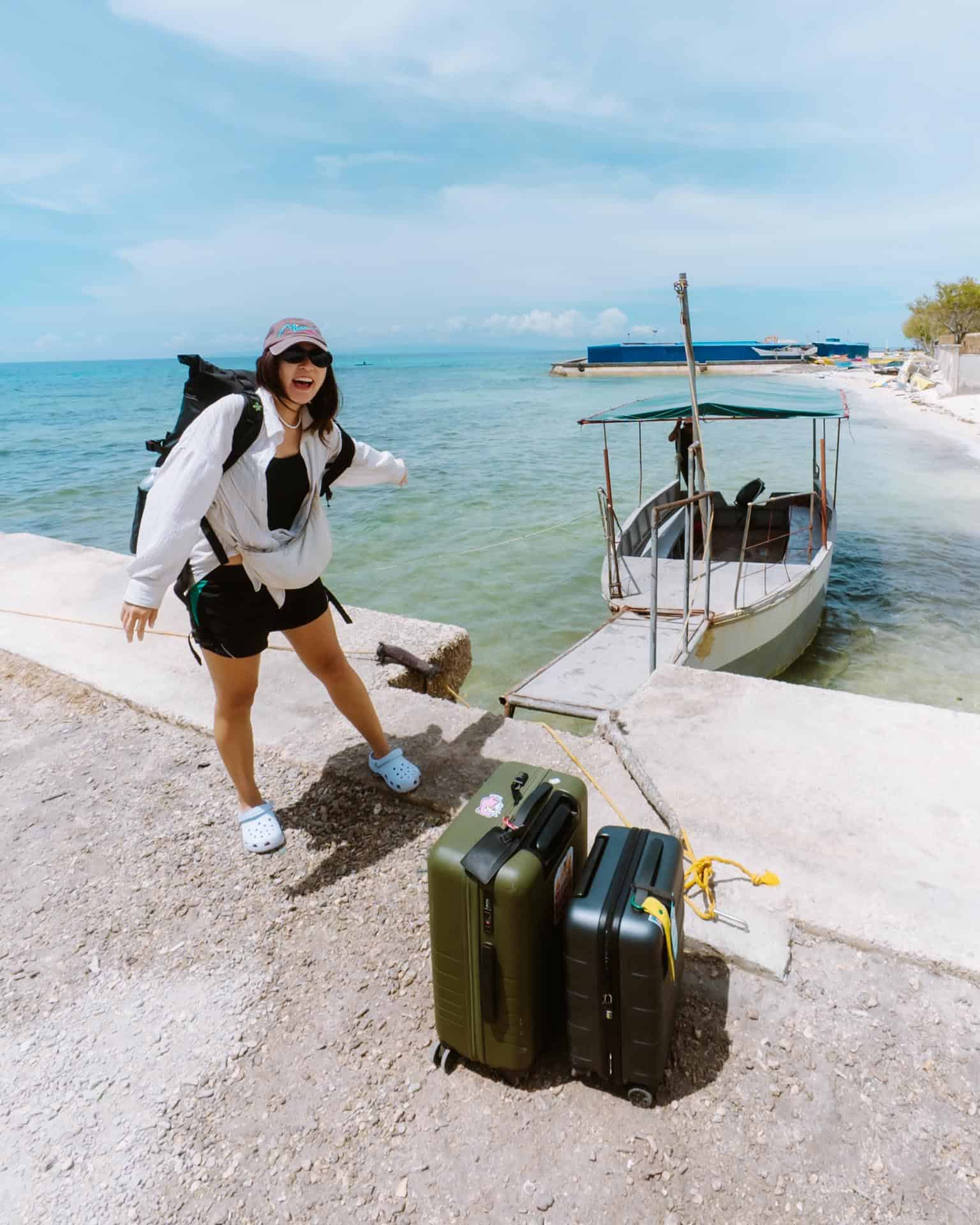
Is the Oslob to Panglao Ferry Safe?
When we rode the ferry from Oslob to Panglao, it felt generally safe. The ferry was not old and in good condition, especially for the Philippines.
To make a comparison, we felt much safer riding the Oslob to Panglao ferry than we did when riding the fast boat ferries in Bali. The Oslob to Panglao ferry is larger than the Bali fast boats and travels more slowly, at a much safer speed.
When we rode the ferry, the Coast Guard came aboard before the ferry left Oslob to ensure that the ferry had enough life jackets for everyone. The ferry handed out life jackets to all passengers and there were more than enough for all passengers aboard the ferry.
There are some reports online that the Oslob to Panglao ferry is a “fishing boat” which is simply not true. The Oslob to Panglao ferry is a passenger ferry, not a massive ferry for transporting vehicles, so that’s probably where the confusion stems from.
Frequently Asked Questions About the Oslob to Bohol Ferry
Will I Get Wet on the Ferry?
In the past, passengers had to board a small boat on the beach before getting brought to the actual ferry. This meant that passengers had to wade through the water, sometimes even getting their luggage wet. I’m happy to let you know that this is no longer the case.
While you still need to ride a small boat first to board the ferry, the small boat is boarded through a dock so you don’t need to step foot in the water at any point.
When you get off the ferry in Panglao, you walk on a wooden ramp from the small boat to the shore.
We didn’t get wet at any time during our ride on the ferry.
How Long Is the Ferry Ride from Oslob to Bohol?
The ferry travel time from Oslob to Bohol is about 2 hours. If the seas are rough, expect the ferry ride to take longer.
Where to Stay in Oslob
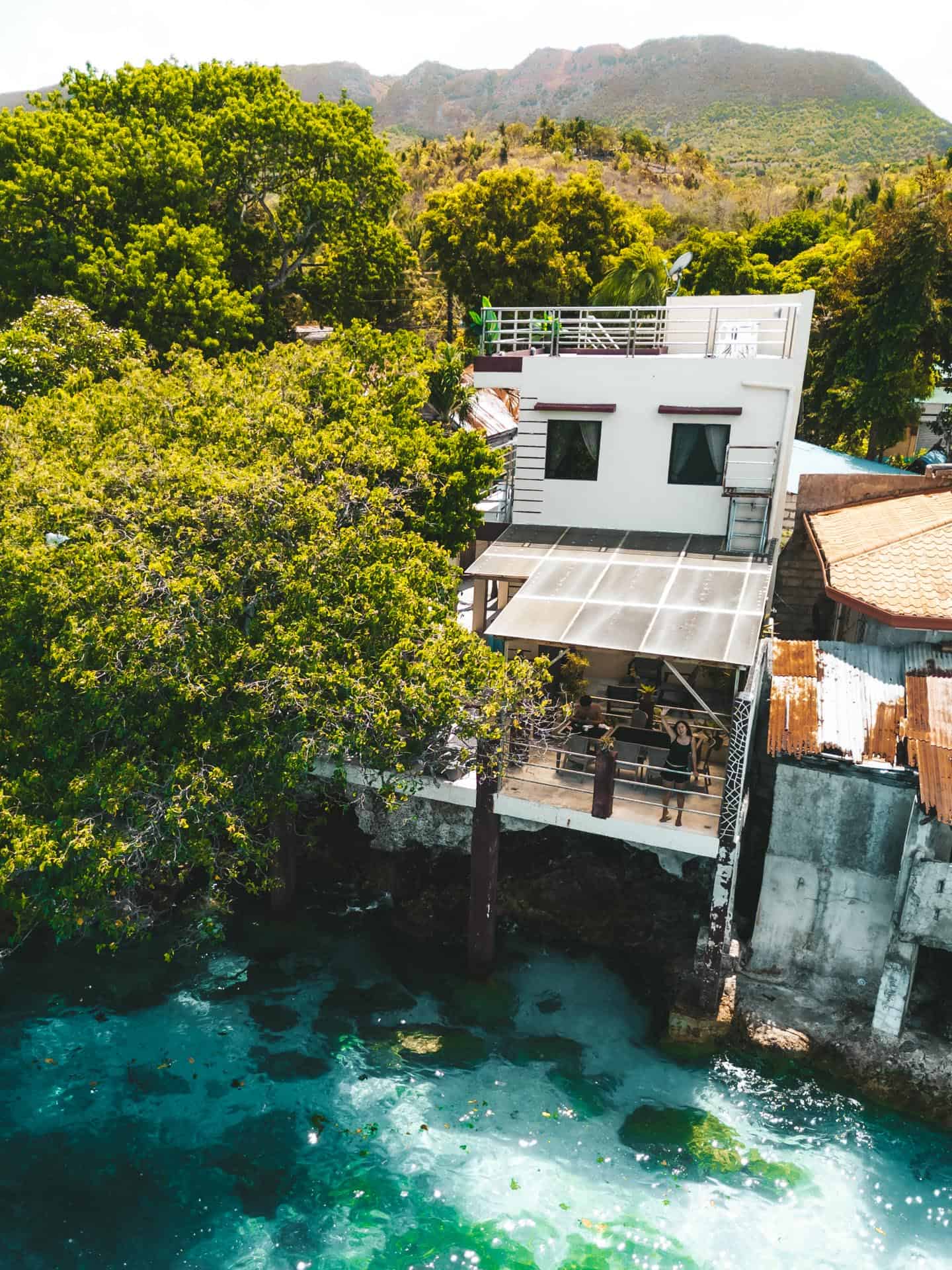
If you prefer to rest before riding the ferry in Oslob then our recommended stay is at Melronz Inn. We stayed at Melronz Inn during our time in Oslob and it is a nice clean place run by an amazing family. The best part is that it is right on the water with private ocean access.
Where to Stay in Bohol
Depending on how long you stay in Bohol we recommend splitting your stays between Panglao and Anda. If you are in Bohol for less than 4 days we recommend basing yourself out of Panglao, but if you are staying longer I recommend staying at least 2 nights in Anda. Here are recommendations on places to stay:
- Luxury: Amorita Resort (Panglao)
- Mid-range: Casa Amihan (Anda)
- Budget: Bluewaves Apartment (Panglao)
If you prefer to find your own place to stay, you can visit Booking.com to explore all your accommodation options in Bohol.

What to Pack for Bohol
Here are some of our must-have items you might not have thought of when packing for a trip to Bohol.
- Crocs: During our time in Bohol, I was so glad to have Crocs to protect my feet when exploring rocky terrain and chasing waterfalls. They are the ultimate shoe in the Philippines for a reason – many Filipinos wear them too!
- Snorkel: With all the amazing snorkeling spots in Bohol, it helps to have your own snorkel set like this one if you plan to do some underwater activities! Plus, you won’t need to worry about renting a snorkel, which may be of… questionable quality.
- Sunscreen: For some reason, sunscreen is expensive in the Philippines and I’ve even encountered places selling fake sunscreen that doesn’t work! So I recommend bringing your own sunscreen to Bohol.
- Dry Bag: With all the sand, salt, and water flying everywhere during our adventures, I was so glad to have a dry bag to keep all my things safe from the elements!
- Travel Towel: In my opinion, a travel towel like this one is super necessary for a trip to Bohol! It packs down nicely and was there for me anytime I went swimming, or just needed to brush sand or dirt off.

Our Free Bohol Google Maps Locations
Do you need a handy map with all our Bohol locations? We’ve got a Google Map with all the Bohol locations in this post (plus a LOT more). Sign up in the box below and we’ll deliver it right to your inbox, plus our top tips to help you plan your Bohol adventure.
Ready to explore Bohol like we did?
During our 11-day adventure in Bohol, we found some of the island’s most stunning natural wonders—epic waterfalls, caves, and incredible snorkeling spots. To help fellow adventurers, we’ve put together guides to the best places we found. You can check them out by clicking the links below.
- Start planning your trip here: Bohol Travel Guide
- Our Bohol accomodation/area guide: Where to Stay in Bohol
- Our Ultimate Guide to Bohol: 24 Awesome Things to Do in Bohol
- How to plan your Bohol vacation: Bohol 3 Day Itinerary
- Interested in chasing waterfalls?: 5 Best Waterfalls in Bohol During Dry Season
- Our favorite hike in Bohol: Alicia Panoramic Park Hike
- Our favorite day tour in Bohol: Balicasag Island Snorkeling
- Our favorite waterfall in Bohol: Dimiao Twin Falls (Pahangog Falls)
- Our favorite place to swim in Bohol: Cabagnow Cave Pool
- How to rent a motorbike in the Philippines

I hope you enjoyed our guide about how to get from Oslob to Bohol by Ferry. Feel free to leave a comment below if you have any questions 🐸


